7 sciatica stretches that ease pain, according to physical therapists
Sciatic nerve pain can be a mild, daily nuisance. And when it flares up, sciatica can cause severe pain that will derail your whole day. That's why it's important to learn sciatica stretches that can keep pain at bay and even reduce those flare-ups when they happen.
Nerves need three things to stay healthy and function properly: movement, space and blood supply, Colleen Louw, physical therapist and program director at Evidence In Motion and spokesperson for the American Physical Therapy Association, tells TODAY.com.
Anti-inflammatory medications might help relieve nerve-related pain to some degree, "but then you have to start moving that nerve," Louw says. "And you've got to create space so that we can get blood flow back in and around the nerve itself."
That's why regularly performing gentle stretches can reduce pain related to a nerve and relieve tension in the muscles around the nerve. And when it comes to sciatica, there are some specific stretches and exercises that are highly effective.
What is sciatica?
Sciatica is a type of pain that can occur anywhere along the sciatic nerve, which travels from the lower back all the way down the leg.
The two most common causes of sciatica are a herniated disc in the lower spine and lumbar stenosis, Trevor Delaney, physical therapist and certified primary spine practitioner at the University of Pittsburgh Medical Center, tells TODAY.com.
The discs between your spinal vertebrae contain a gel-like center that helps to cushion them. But when the disc is herniated, that means the gel has started to leak and "is pushing on one of the nerve roots in the spine," Delaney explains. A herniated or bulging disc in the lower back area can directly cause sciatica.
Lumbar spinal stenosis, on the other hand, is a degenerative condition that causes a "narrowing of the openings where the spinal nerves are," Delaney says. The condition is most common among adults over the age of 60. But people who are born with certain spinal conditions may be predisposed to developing spinal stenosis earlier in life.
What does sciatic nerve pain feel like?
Sciatic pain can appear at multiple points down the leg depending on where along the nerve the root of the irritation or compression is coming from, Delaney explains.
"It can be anywhere from the top of the buttock down into the back of the leg or even across the front of the leg and the thigh," he says. Sciatica pain may also go down the outside of the leg, he adds.
"First, it starts in (the patient's) rear end, and then it starts to creep down the leg down into the calf and then sometimes into the foot," Louw says. But it doesn't always follow that pattern, she adds. "Sometimes they might just feel it in their big toe. Sometimes distal symptoms are the only time they feel something," she says.
People with sciatic nerve pain typically describe it as a burning pain or deep ache, Delaney says. They may talk about the pain as if it's an ache that "they can't massage out or really get to," he explains.
Sciatic nerve pain can also feel numb, tingly or electric shock-like, the Mayo Clinic says. And it typically only affects one leg.
Sciatic stretches to ease pain:
Prone press-ups
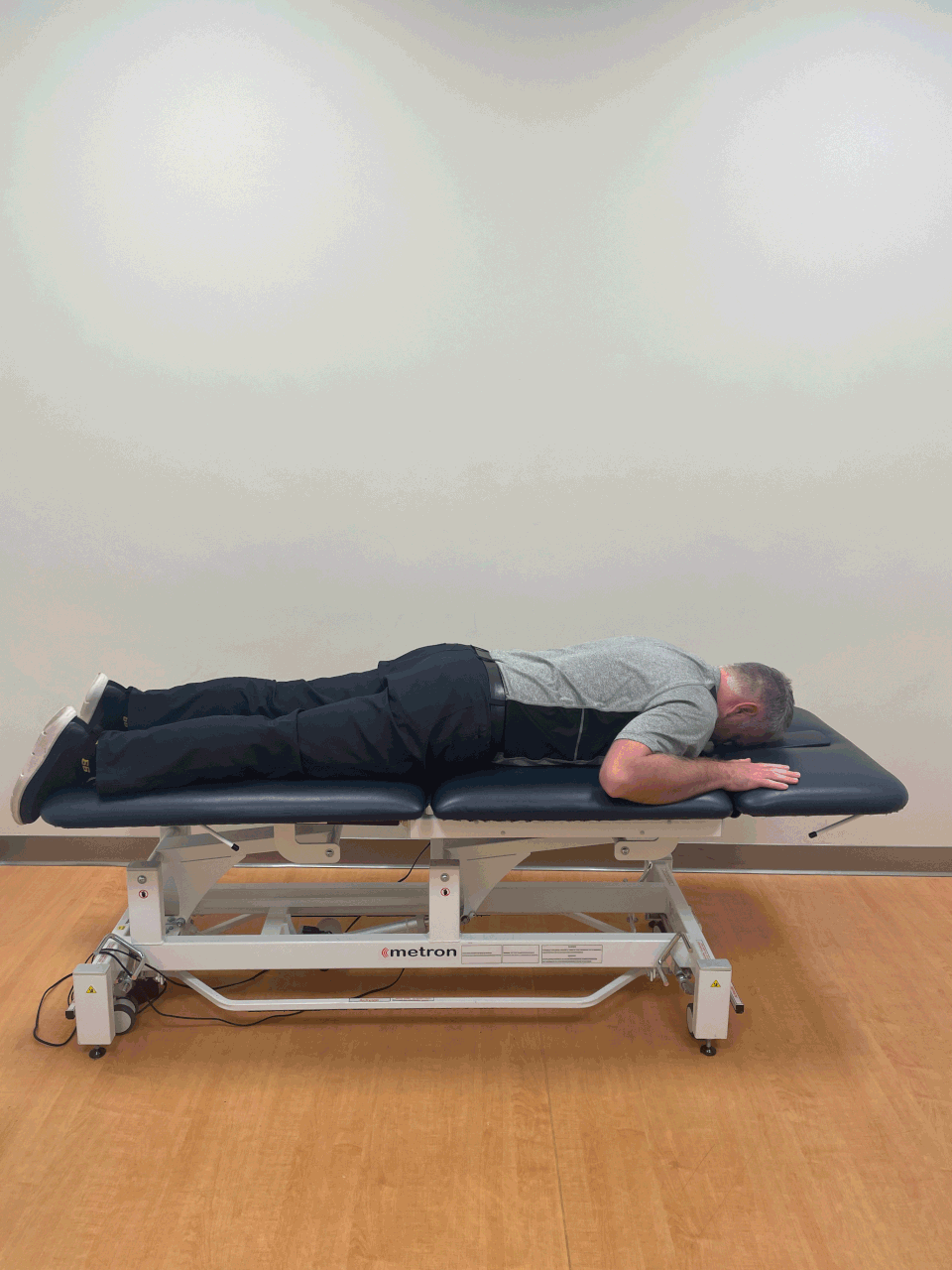
This exercise, which is similar to a cobra pose in yoga, is commonly recommended for people with sciatica.
"When a disc herniates, the gel in the middle actually pushes its way through the outer cartilage layer," Delaney says. The theory with press-ups is that, by moving your body in this way, "you're compressing the backside of that disc, which allows that gel to be reabsorbed," he says.
Sometimes, people experience a little more back pain with this exercise, but it helps reduce pain that's traveling further down the leg, he adds.
If you have a history of disc-related issues, Delaney recommends doing this exercise regularly — even daily. "Certainly, if you have a flare-up, you definitely want to be doing it every day," he says. And if you're not in the middle of a flare-up, try to do it at least a few times a week.
Start by lying on your stomach.
Place your elbows under your shoulders and rise up onto your elbows. Keep your pelvis on the floor (or physical therapy table).
Move your hands into a pushup position and press away from the table. If you're able to do so without pain, fully extend your elbows.
Hold this position for 10 seconds. Repeat for a set of 10.
Figure 4 piriformis stretch
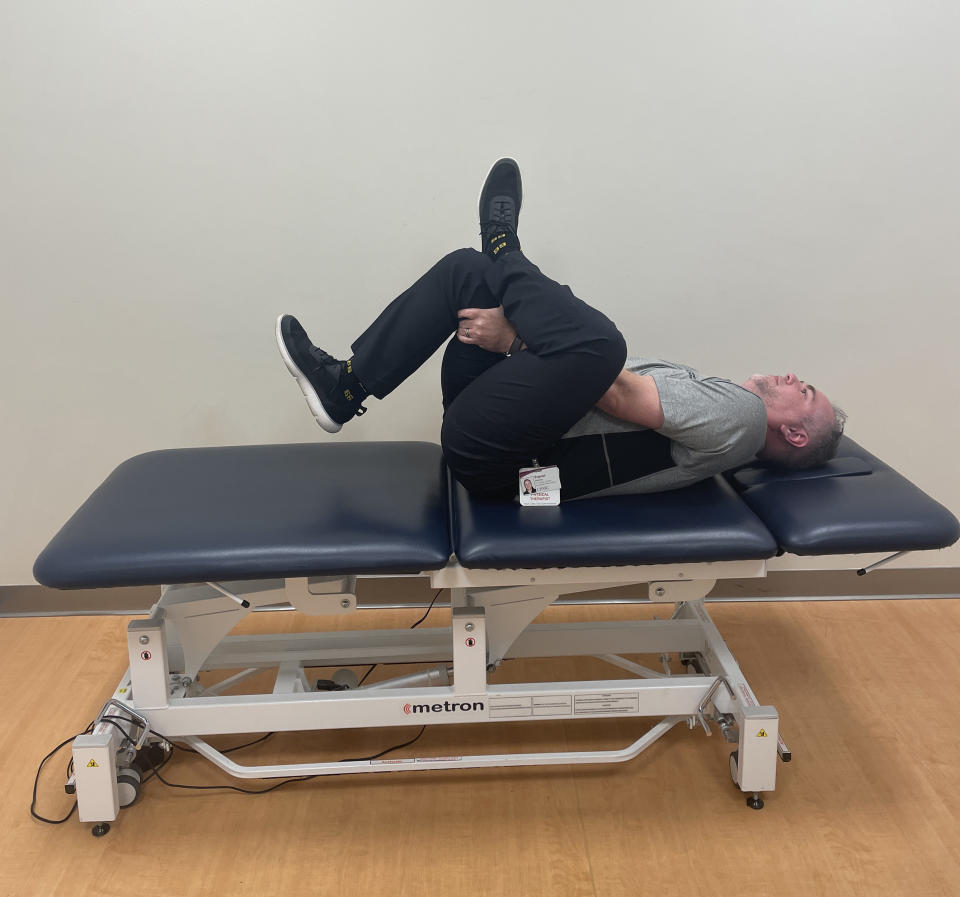
You'll feel the classic figure 4 stretch in your glutes and hips. It's especially good at targeting the piriformis muscle, a flat muscle that sits just above the sciatic nerve. If the piriformis is irritated, it can cause inflammation and compression that also triggers sciatica-like symptoms.
Start by lying on your back with your knees bent.
Cross one leg over the knee of the opposite leg. Your ankle should be resting on the opposite knee.
Grab behind the upper thigh of the bent leg, bringing both legs towards your chest.
Hold the stretch for 20 seconds and repeat for a set of five.
Angry cat pose
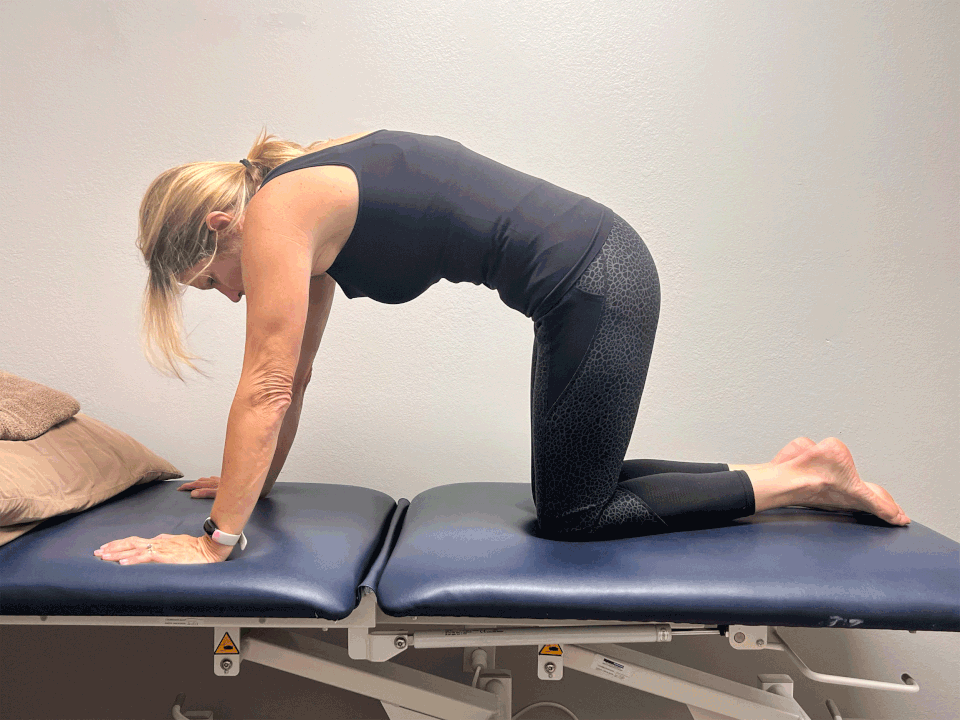
This stretch is similar to a cat pose that you might do in yoga. It helps create space in the back, which can ease sciatica pain, Louw explains.
Start on your hands and knees.
Arch your upper back, pressing down through your hands.
While keeping your back arched, sit back towards your heels.
Then, come back up to all fours and repeat 10 times.
Single knee to chest
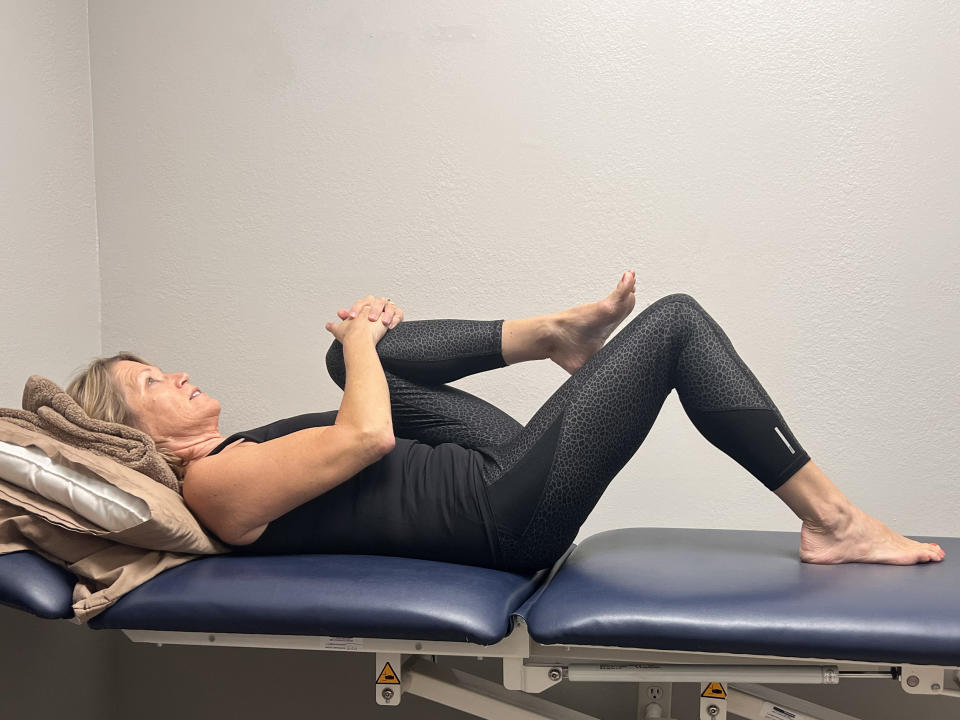
For people dealing with sciatic nerve pain related to stenosis, the key is creating space for the nerve to move.
"You're just trying to create a bigger opening and to take pressure off the nerves," Delaney says.
"We're trying to create space for the vertebral foramen," Louw says, which is the opening in the vertebra that the spinal nerves run through. The single knee to chest exercise can help.
Start by lying on your back with your knees bent and feet on the floor.
Grab behind the thigh of one leg.
Bring the knee up towards the opposite side of your chest.
Hold this stretch for five seconds and repeat 10 times with each knee.
Double knees to chest
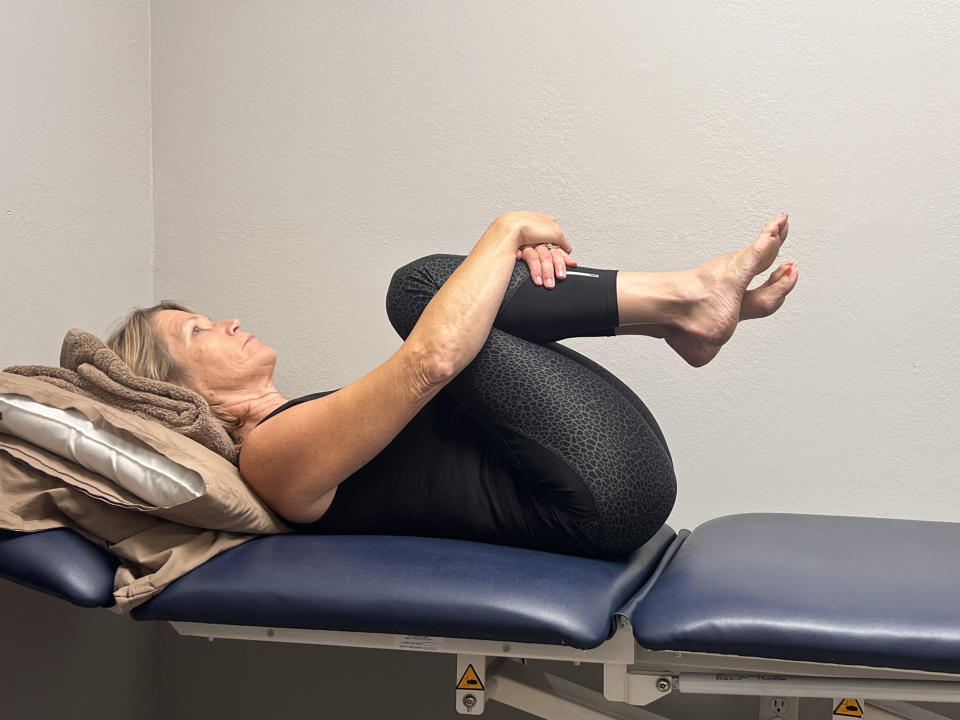
You can perform the knees to chest stretch with one leg at a time or both depending on your comfort level.
As before, start by lying on your back with your knees bent.
This time, grab for the back of both thighs and bring both legs up to your chest.
Hold the outside of your shins for five seconds. Repeat for a set of 10.
Sciatic nerve flossing
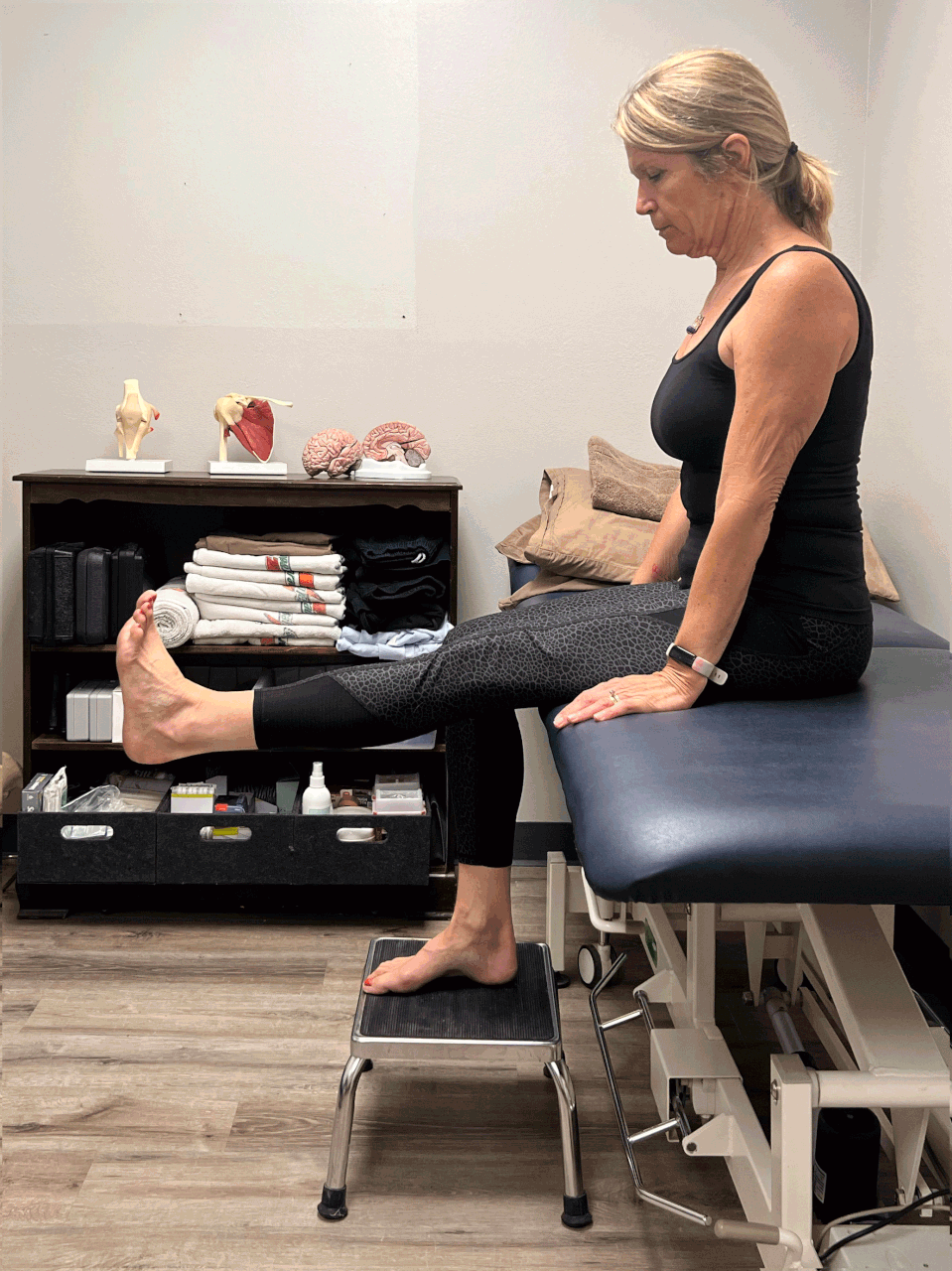
When nerves are inflamed, any tension you put on them — whether you're standing, walking or sitting — causes pain. The idea with nerve flossing exercises, also called nerve glides or gliders, is to hold the nerve at one end and loosen it up at the other, Delaney explains. Then you switch.
"Basically, you're flossing that nerve back and forth and trying to create more mobility that way," he says, which is especially helpful if there's been any long-term nerve irritation.
For this exercise, start seated upright in a chair.
Bring the affected leg out straight in front of you.
Flex your foot and let your head bend back at the same time.
Point your foot as you bend your head down in front of you.
Repeat back and forth 10-20 times without holding the stretch. Try to keep it active the entire time.
Sciatic nerve tensioning
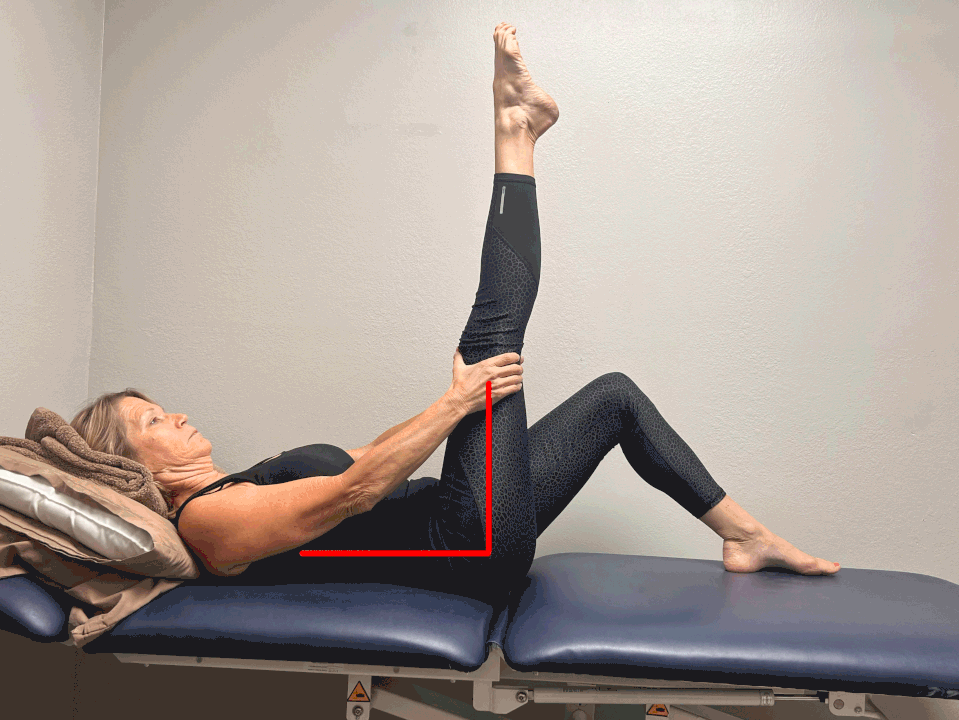
Nerve tensioning is a more intense version of flossing, Delaney says. Here, you're momentarily putting tension at both ends of the nerve and releasing it. "You just take it to the point where you start to feel that stretch or that tension on the nerve and then bring it back down," he explains.
Choosing whether to do flossing or tensioning may come down to a patient's tolerance level and what kind of pain they're in at the moment, Delaney says. Because flossing just requires putting tension on one end of the nerve, it's usually easier to tolerate than tensioning.
"We use the gliders when we want to get blood to flush back to the nerves, and the tensioners are for when we're challenging the nerve to move better and move more," Louw explains.
Start lying on your back with your knees bent and feet on the ground.
Grab the back of one thigh to bring your knee to about a 90-degree angle. Do not pull your leg past your hip.
Straighten the leg until you feel a stretch and point your toes straight to the ceiling.
Flex your foot and bring your leg back down to a 90-degree angle. Don't hold your foot in the flexed position. Try to keep this active throughout the entire exercise.
Repeat these motions 10-20 times.
When to see a doctor for sciatic pain
If this is the first time you're experiencing what feels like sciatic nerve pain or your pain feels different from what you've had before, you should talk to a doctor or physical therapist first, Delaney says.
But if you know you're dealing with sciatic nerve pain, you can go ahead and try these sciatica stretches for a week. After that, if your pain isn't getting better or it's getting worse, Delaney recommends talking to a medical professional.
Additionally, there are some more serious warning signs that you should flag to a doctor. "As physical therapists, we get a little bit more concerned if (the affected area) becomes numb or if it becomes weak," Louw says. That can signal that a nerve issue has been going on for a longer period of time.
Other signs of serious nerve conditions include leg weakness so severe that you feel like you're dragging it when walking, as well as changes in bowel or bladder control, Delaney says. "Those are things that you need to call your doctor about immediately."
This article was originally published on TODAY.com

